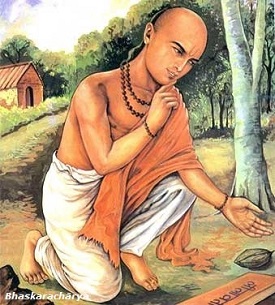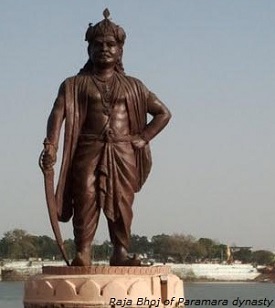
- Ancient Indian History - Home
- Study of Indian History
- Writing of Ancient Indian History
- Imperialist Historiography
- Historiography Nationalist Approach
- Marxist School of History
- Sources of Ancient Indian History
- Archaeological Sources
- Geographical Background
- Geography in Ancient Literature
- Stone Age Cultures
- Mesolithic Culture
- The Neolithic Age
- Chalcolithic Period of India
- Chalcolithic Culture In India
- Harappan Civilization
- Harappan Town Planning
- Harappan Crafts & Industries
- Harappan Culture
- Harappan Religion
- Harappan Chronology
- Vedic Civilization
- Vedic Society
- Vedic Politics
- Vedic Religion & Philosophy
- The Aryan Invasion
- Later Vedic Age
- Social System after Vedic Age
- Achievements of Indian Philosophy
- Evolution of Jainism
- Evolution of Buddhism
- Alexander’s Campaign in India
- Maurya Dynasty
- Kalinga War & its Impact
- Society & Economy during Mauryas
- Mauryan Governance
- Early History of South India
- Age of Smaller Dynasties
- Literature of Satavahana Period
- Society of Satavahana Period
- Economy of Satavahana Period
- Technology of Satavahana Period
- Chola Dynasty
- Pandya Dynasty
- Chera Dynasty
- Period of Foreign Invaders
- Gupta Period
- Decline of Guptas
- Governance of Gupta Period
- Literature of Gupta Period
- Economy in Gupta Period
- Science & Tech of Gupta Period
- India after the Gupta Period
- Period of Harsha
- South India during the Harsha Period
- Kadamba Dynasty
- History of Kamarupa
- India after Harsha
- Gurjara Pratiharas
- Palas of Bengal
- Rashtrakutas of Deccan
- Literature after the Harsha Period
- Society after the Harsha Period
- Economy after the Harsha Period
- Religion after the Harsha Period
- References & Disclaimer
Literature after the Harsha Period
Sanskrit remained the main language of the literature.
Pali and Prakrit were used for writing the Buddhist and Jain religious literature.
Vakapati's Gaudavaho was the biography of Yashovarman of Kanauj. It was the last major work in the older tradition of Prakrit.
Apabhramsha represented the last stage of Prakrit languages. This was considered as an important development in the field of literature because the modern languages, such as Hindi, Gujarati, Marathi, and Bangla have all evolved from it.
A number of kavyas with great significance constitutes a special feature of this period.
The Ramacharita of Sandhyakara Nandi written during the reign of king Mahipal of the Pala kingdom, represents both the story of Rama and the life of king Ramapala of Bengal.
The Raghavaphandavija of Dhananjaya Shrutokriti describes the stories of the Ramayana and the Mahabharata at the same time.
The marriage of Siva and Parvati; and Krishna and Rukmini are described in the Parvati-Rukminiya written by Vidyamadhava.
Vidyamadhava was the court poet of the Chalukya king Somadeva.
Hemachandra composed a work entitled as Saptasandhana (having seven alternative interpretations).
The style of writing in the intricate patterns of double, triple or even more meanings is found in the literature of this period.
Shatarthakavya written by Somaprabhacharya, is an example of literary climax in which every verse was meant for being interpreted in a hundred ways.
Jaina Teachings
-
In addition to all these (discussed above), a large number of Jaina narratives dealing with the lives of Jain teachers were composed. The significant of them are −
Adinathacharita by Vardhamana
Shantinathacharita by Devachandra
Prithvichandracharita by Shantisuri
Parshvanathacharita by Devabhadra
Kuarapalacharita and Neminathacharita by Hemachandra
Sukumalachariu by Shrihara
Neminathacharita by Haribhadra
Other Literary Works
The Neminathacharita by Haribhadra and Sukumalachariu by Shrihara have been entirely written in Apabhramsa.
Rajatarangini written by Kalhana is the most remarkable historical texts in the kavya form. It is the only known attempt to write history in the modern sense.
Rajendra Karnapura is a eulogy of king Harsha of Kashmir written by Shambu.
-
Other literary works of this category are −
Prithviraja Vijay of Jayanka
Dvayashraya Mahakavya by Hemachandra
Kirtikaumndi by Someshvara
Vikramankadevacharita of Bilhana
Navasahasankacharita of Padmagupta
Kirti Kaumudi by Somadeva
-
The most important among the treatises were the poetic works. Some such works are −
Kavyamimamsa by Rajashekhara
Dasharupa by Dhananjaya
Saraswati Kanthabharana by Bhoja
Kavyanushasana of Hemachandra
Kavikanthabharana by Kshemendra
-
The famous work in the field of prose literature are −
Brihatkathamanjari by Kshemendra
Kathasaritasagara by Somadeva
Kathakoshaprakarana by Jineshvara Suri
-
The famous dramas are −
Lalitavigraharaja nataka by Somadeva,
Harikeli nataka by Visaladeva
Prasannaraghava by Jayadeva
Karnasundari by Bilhana
Abhidhana Chintamani, Deshinamamala, Anekarthasamgraha, Nighantushesha, all written by Hemachandra.

The famous mathematician Bhaskaracharya also belonged to the 12th century. A.D.
Siddhanta-Shiromani, comprises in four parts, namely Lilavati, Vijaganita, Grahaganita, and Gola. Gola deals with astronomy.
Siddhanta Shiromani propounded the principle of Perpetual Motion. It was transmitted by Islam about A.D. 1200 to Europe. This led to the development of the concept of power technology.

Rajmariganka is the work on astronomy written by King Bhoja of Paramara dynasty.
Madhava wrote several works on medicine. Nidana or Riguimshchana is his best known work on Pathalogy. It was translated into Arabic under the guidance of Harunal Rashid.
Chikitsa Kutamudgara and Yogavyakhya were also written by Madhvav.
Chikitsakalika or Yoga-mala written by Vagabhata II's son Tisata.
Yogaratnasamuchchhaya was written by Chandratha. He was the son of Tisata.
Brinda of Bengal wrote his Siddhayoga between A.D. 975 and 1,000.
-
Some commentaries compiled during this period are −
Krityakalpataru written by Lakshmidhara
Chaturvarga Chintamani written by Hemadri
Mitakasara written by Vijnaneshvara
Dayabhaga (Law of inheritance) written by Jimutavahana
Vyavaharamatrika and Kalaviveka Manuvritti by Govindaraja
Smrityarthasara written by Shridhara
A commentary on the Yajnavalkyasmriti written by Apararka
A commentary on the Yajnavalkyasmriti was also written by Vijnaneshvara
Smritichandrika written by Devanna Bhatta are other outstanding creations of this period.
-
Important works on polity are −
Nitishastra written by Mathara
Nitisara written by Kamandaka
Nitivakyamrita by Somadeva suri